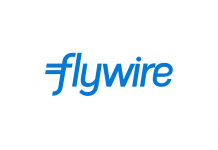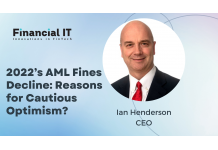Anti-Money Laundering Verification and Shell Corporations

- Adam Holden, CEO at Northrow
- 06.10.2022 05:30 pm #aml
Shell corporations are infamous for all the wrong reasons—both from a moral and regulatory compliance perspective. These organisations, which go by the name "ghost firms," are regularly used to conceal unlawful cash and, more significantly, the identities of beneficial owners. Shell company anti-money laundering verification is a major pain point and a compliance challenge for regulated enterprises. This blog discusses the usage of shell corporations, ways that criminals launder money, changes in beneficial owner registrations, and best practices for client due diligence when onboarding shell corporations.
A look behind the inception of shell companies
The time when you could commit crimes with a numbered Swiss bank account and a compliant Swiss banker who could keep a secret, or an Austrian account if you weren't mainstream, is long gone. The concept that Switzerland is the world's largest hub for managing offshore riches and concealing illicit cash was popularised by criminals and kleptocrats. Shell Companies and anti-money laundering verification.
All of this changed in October 2018, when the Federal Tax Administration (FTA) and the Swiss tax agency formally began sharing bank account information with tax authorities abroad. People could no longer conceal questionable funds in Swiss banks since their information would be shared with governments in their home countries.
This required the criminals to find a new method of successfully erasing their traces from the stolen money being laundered via the banking system, and they discovered it in shell firms. These have emerged as the preferred method for former state-sanctioned individuals, kleptocrats, and money launderers to transfer their funds easily and unhindered, making anti-money laundering verification challenging for compliance teams around the world.
What is a shell corporation and how does it work?
A shell company is a corporation that only exists on paper, has no physical location or staff, but may have a bank account, hold passive investments, or be the legally recognized owner of assets like ships or intellectual property. The corporation doesn't necessarily need to have any significant assets or operations to act as a vehicle for business transactions. However, they can also be used for money laundering, tax avoidance, or just to achieve a specific objective, such as anonymity. Shell companies are occasionally utilised for legal business purposes. Anonymity may be sought to protect personal assets from third parties, such as a spouse when a marriage is dissolving, from creditors, and government officials.
The 2016 Panama Papers Leak exposed the sophisticated networks that bad actors use to steal from governments, traffic in weapons, drugs, and endangered species, and exercise totalitarian influence on democracies all around the world. In addition, these are frequently linked to Britain's offshore financial hubs.
How shell companies are used to launder money
In order to launder money, shell businesses typically claim monetary transactions on behalf of their clients. Having multiple transactions lowers the possibility of tracking down the original recipient and increases anonymity. Then, money launderers deposit cash into the business, which is then transferred to the criminal's account by means of fabricated invoices. Such transactions create the appearance of propriety and clean money. In order to further obscure who originally deposited the money, the shell company can then make withdrawals and either return the money to the original criminal or pass the money through additional layers of shell companies. This makes it difficult to verify the identity of shell companies for anti-money laundering purposes.
Tactics used by shell companies to remain anonymous
1. Layers of corporate structures
It is a planned strategy to conceal the trail of unlawful gains and make it more challenging for regulators to identify and stop a laundering activity by using layers of corporate shell firms. The well-known techniques include purchasing material assets with cash and then selling them, and converting cash into monetary instruments using money orders and banker's drafts.
2. Different jurisdictions
Often different financial zones are used to increase the complexity of tracing corrupt money. For instance, a shell corporation could be established in the British Virgin Islands to transfer money to a trust in Wyoming, USA, while the money could be managed by a lawyer headquartered in London and possibly housed in a Malaysian bank.
Any one of those buildings might be the target of a government or law enforcement inquiry. Together, however, they form an almost impregnable structure because no one agency could pay to simultaneously challenge every legal system in every separate nation and remove every corporate protection that each one offers.
3. Hiding Ultimate Beneficial Ownership (UBO)
Last but not least, shell firms are frequently set up in a way that conceals the genuine identities of the Ultimate Beneficial Owners (UBOs) and makes verification very challenging. They might be PEPs or sanctioned individuals, but because of the level of anonymity these companies offer, they can dodge sanctions and the AML checks that businesses use to look for unusual financial activity.
Crackdown of anonymous shell companies at the G7
In order to stop kleptocrats from undermining the COVID-19 recovery, the 2021 G7 Summit, held in the UK, specifically advocated the global adoption of increased corporate transparency by dismantling shell corporations through the use of beneficial ownership registers.
Daniel Bruce, Chief Executive of Transparency International UK, said:
“Anonymous shell companies are a well-recognised tool of kleptocrats and organised crime groups involved in the trafficking of drugs, arms, endangered species and people. Despite growing evidence of their use for illicit finance, the international community has been slow to act decisively against anonymous companies. The G7 now has the opportunity to lead the path to long-lasting solutions by implementing strong measures at the national level and by pushing for stronger global standards.”
Only recently have world leaders resolved to take action against anonymous shell firms and move it up the priority list.
Companies House reform – improve anti-money laundering (AML) verification of shell companies
The 5th Anti-Money Laundering Directive (5AMLD) of 2018 called on EU member states to make their beneficial ownership records public in recognition that openness can be a potent instrument in the fight against money laundering and financial crimes. Even though the UK left the EU after Brexit, it opened up access to its company registry in 2016. The UK, however, continues to be a desirable location for international crooks and kleptocrats, as the recent FinCEN files probe made clear. This has been explained by the fact that forming a business is inexpensive and simple in the UK, as well as by the fact that the data is (at the moment) unconfirmed.
To combat this, the UK's Economic Crime Plan made reform of Companies House a priority and focused on including plans to enact mandatory identity verification to aid in the prevention and detection of fraud and money laundering, as well as giving Companies House greater authority to query, investigate, and remove false information from the register.
Companies House now has more authority and takes a proactive stance. Therefore, by working together to address the challenges of identifying and continuously monitoring Ultimate Beneficial Owners, regulated businesses, Companies House, and technology providers will bring the fight against fraud closer to those who use these intricate structures to conceal their illicit gains.
Anti-Money Laundering (AML) verification of shell companies
Shell firms can conceal ownership identification, which presents a difficulty for compliance authorities even though they are not usually found with malicious purposes. Shell firms continue to be a concern despite authorities around the world imposing stricter anti-money laundering procedures and rules, as well as mounting pressure on all EU countries to make UBO registry data freely and publicly available.
What can you do as a compliance officer?
In order to map out links between various entities, compliance teams must first make sure they are working with the appropriate AML solution and technology provider. This supplier must be able to compile accurate, reliable global data sets from a range of sources. Any compliance technology partner worth its salt should be able to quickly identify both the existence of problematic actors and Ultimate Beneficial Ownerships.
Below are some key measures:
Know Your Business verification: Regulated enterprises can ensure that they are doing business with real, legitimate organisations and not a dubious shell company by doing thorough verification on businesses.
Client Due Diligence: Using a combination of liveness checks, address verification, real-time ID document verification, and other techniques, compliance teams should do thorough CDD remote verification on the firm directors and beneficial owners. (Note that this will need to be done remotely as the corporate personnel are frequently spread across various jurisdictions.)
Sanctions Screening: Customers who are listed as subject to international sanctions may try to enter the legitimate financial system through shell firms. AML teams must check customers against the pertinent international sanctions lists, such as the Specially Designated Nationals and Blocked Persons list maintained by OFAC or the UN's Consolidated List, and it is important to look into whether they are associated with any fake or real shell companies.
PEP Screening: PEPs (politically exposed persons) offer a greater AML risk and may employ shell firms to get around CDD regulations. The status of PEP should be checked often.
Adverse media: Shell company ownership frequently generates negative press and can signify a shift in a customer's risk profile. As a result, businesses should keep an eye out for negative articles in both traditional screen and print media as well as internet and social media platforms.
Ongoing monitoring: For both the corporate entity and the company UBOs or directors, monitoring any event changes is essential to managing your risk.

























